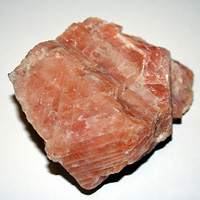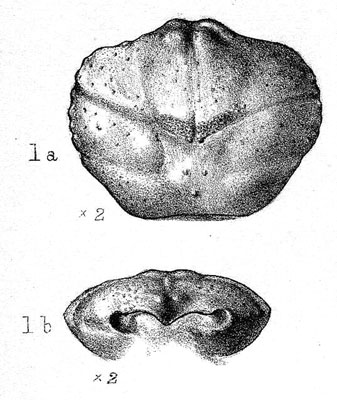Caroline Birley

Caroline Birley was born on November 16th 1851 at York Place, Oxford Road, Manchester. She was the youngest of four children to Thomas Birley and Anne Leatham.
She was a niece of Hugh Birley MP and of Herbert Birley, for many years chairman of the Manchester School Board.
They were a wealthy family, listed in Burke’s Peerage as Landed Gentry. They made their money from textile and rubber factories in Manchester and surrounding areas. They also ran a charitable hostel for girls, and helped to fund schools and churches in the Pendleton area.
In 1857 the family moved from York Place to Highfield in Heaton, Merseyside. In 1864 they moved again to Hart Hill Mansion, Pendleton (the mansion was demolished in 1926).
A Passion for Science
 By 1864, aged 12, Caroline's interest in geology was becoming clear. In that year, a new technical journal called The Geological Magazine was published. Caroline had a subscription taken out in her name.
By 1864, aged 12, Caroline's interest in geology was becoming clear. In that year, a new technical journal called The Geological Magazine was published. Caroline had a subscription taken out in her name.
She remained at Hart Hill Mansion until 1884, when she moved across the road to 4 Seedley Terrace.
In 1887 the British Association for the Advancement of Science (BA) held a conference in Manchester. Caroline attended and became a member. The following year she became a life member, and attended every annual meeting up to her death.
She was a member of the Geologists Association from 1890 and must have had an interest in molluscs too as she was a member of the Malacological Society of London from 1894.
She was an author too, writing numerous childrens' books, many published by the Society for the Promotion of Christian Knowledge.
Caroline Birley: Field Geologist
 Between 1887 and 1905 Caroline made many trips abroad, often for the purpose of collecting geological specimens, usually with her friend Louisa Copland. Her trips included:
Between 1887 and 1905 Caroline made many trips abroad, often for the purpose of collecting geological specimens, usually with her friend Louisa Copland. Her trips included:
- January 1887 - Egypt
- June 1887 - Cortina, Italy
- July 1888 - Faxe, Denmark
- May 1889 - Faeroe Islands
- May 1890 - Faeroe Islands
- July 1891 - Faxe, Denmark
- November 1891 - Malta
- November 1892 - Algiers, Algeria
- November 1893 - Corsica, Italy
- August 1897 - Canada
- April 1899 - The Azores
- April 1902 - Boulogne, France
- July 1905 - Cape Town, South Africa
In 1891 she and Louisa co-authored a piece on the flora of the Faeroes for the Journal of Botany.
In 1900, Dr Henry Woodward of the Natural History Museum, London, wrote an article describing a fossil crab Caroline had found while on a BA trip to Folkestone. Woodward named the crab Mesodromilites birleyi, in Caroline’s honour 1.
In 1901 Woodward wrote another article, this time on the geology of Faxe, Denmark and some fossil crustacea from there. Again the fieldwork had been done by Caroline Birley and Louisa Copland.
The article carried a brief report on the area and the geology written by Caroline.
Woodward named two new species, Dromiopsis birleyae and Dromiopsis coplandae, after Caroline and Louisa 2.
In naming Dromiopsis birleyae he wrote:
I dedicate this species to my friend Miss Caroline Birley, who has given so much time and attention to the study of geology and palaeontology both at home and abroad, and whose private collection bears testimony to her devotion to science
Such praise from high places speaks volumes for the regard in which she must have been held.
The material she collected all went into the museum she created in an iron shelter in her garden at Pendleton. This was called the Seedley Museum and she opened it to members of the public in 1888.
Caroline's Bequest
 In 1895 she made out a will, leaving the majority of her Mineralogical and Geological collections to the Natural History Museum in London. She instructed that the keepers should select the material they wanted from her collections and then pass the rest to The Manchester University Museum. She stipulated that the material at Manchester should not be handled by students though!
In 1895 she made out a will, leaving the majority of her Mineralogical and Geological collections to the Natural History Museum in London. She instructed that the keepers should select the material they wanted from her collections and then pass the rest to The Manchester University Museum. She stipulated that the material at Manchester should not be handled by students though!
She also requested that the material was labelled as belonging to the Caroline Birley Collection.
In addition there were a small number of bequests to specific individuals.
In 1896 she moved to London, living in Brunswick Gardens, Kensington.
She returned to Pendleton shortly before her death from influenza on February 15th, 1907 aged just 55. She was unmarried and had no children. She is buried in Lingfield in Surrey (her brother Francis Hornby Birley lived there).
Although Caroline's will states material should have gone to the British Museum or to Manchester, her executors actually spread the collection more widely.
Lazarus Fletcher of the Natural History Museum and Francis Birley, Caroline’s brother, were responsible for this as her executors.
In her lifetime, Caroline gave many specimens to Oxford University. Oxford was where the men of the Birley family were traditionally educated. Further donations were made after she died.  Wishing to see North West museums benefit (this may have been a verbal request from Caroline), parts of the collection were also sent to museums at Bolton, Bury, Rochdale, Radcliffe and Warrington, as well as to the Manchester Grammar School museum. Unfortunately, this makes it very difficult to estimate the total size of her collections.
Wishing to see North West museums benefit (this may have been a verbal request from Caroline), parts of the collection were also sent to museums at Bolton, Bury, Rochdale, Radcliffe and Warrington, as well as to the Manchester Grammar School museum. Unfortunately, this makes it very difficult to estimate the total size of her collections.
Geology and mineralogy were still very male professions in the 19th Century and Caroline’s independence and curiosity made her a remarkable woman. She is noteworthy not because of any great scientific value in her collections, but for the regard in which she was obviously held by men who did not traditionally work with female collectors.
Francis Birley
 While Caroline was the collector, it is worth mentioning her brother Francis who actually donated the material to Bolton.
While Caroline was the collector, it is worth mentioning her brother Francis who actually donated the material to Bolton.
Francis Hornby Birley was born on the 14th March 1850. He was educated at Winchester, where he played for and captained the cricket team. In 1867 he took 7-73 as they beat Eton, and in 1868 as captain he took 4-41 and 2-25.
Between 1868 and 1879 he occasionally played cricket for Cheshire, Lancashire and Surrey.
He was said to be a good slow right arm bowler and an excellent fielder, as well as being an astute captain.
In 1868 he went to University College, Oxford to study Law. He was one of the first to study Law separately at Oxford (it had previously been taught as a joint honours degree with modern history). He wasn’t the best student by any means, achieving a third in 1872.
He was much more successful as a sportsman, representing Oxford at athletics, as a hammer-thrower, and at football.
It was as a footballer that his greatest sporting achievements came.
- He played for Oxford University in the first ever Varsity football match in 1874, finishing on the right side of a 1-0 victory.
- On 15th March 1874 he won the F.A. Cup, again with Oxford University.
- He then played for the famous Wanderers F.C., a side made up of London-based players from old public schools like Winchester and Eton.
- He won F.A. Cups with Wanderers in 1876 and 1877, captaining the side in 1877.
- He earned England caps in 1874 and 1875.
He was a barrister and later served as Justice of the Peace for Surrey.
He was also a keen ornithologist, showing the interest in the natural world that characterised his sister.
Francis died on 1st August 1910.
Notes
1 - This specimen is at the Natural History Museum in London and has been re-identified as Mesodromilities glaber
2 - These specimens are also in the Natural History Museum. Both have subsequently been re-classified as Dromiopsis elegans
